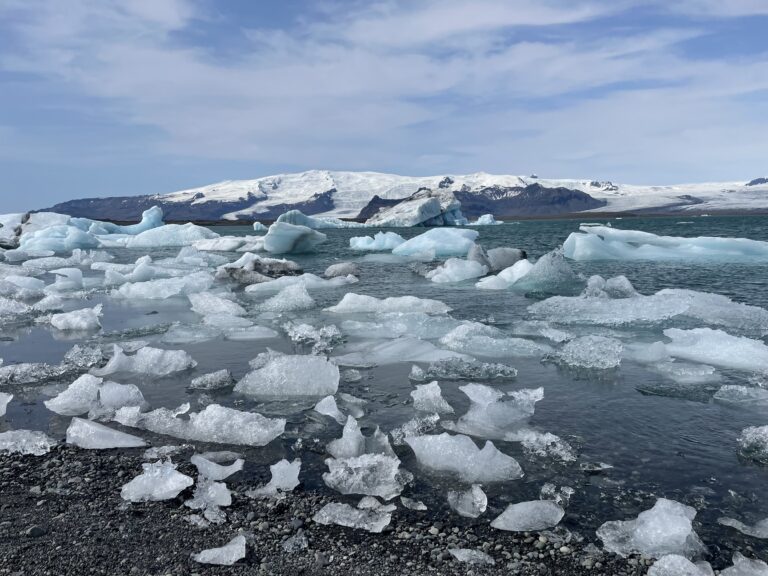Desert adventurer T.E. Lawrence's wartime trek across Jordan, from Wadi Rum to Aqaba, was one of the most arduous journeys of modern times. These days, however, you can explore Jordan's challenging terrain with considerably less effort. You'll probably forego camels for, say, an air-conditioned four-wheel drive. But you might well echo Lawrence of Arabia's awestruck description of Jordan's dramatic desertscapes as "vast, echoing, and God-like."
Set on the ancient crossroads between Arabia and the Mediterranean Sea, Jordan is full of historic sites. Crusaders' forts along old trade routes and ancient cities carved from stone will captivate anyone in search of the past. And although the land might be ancient, Jordan's cities offer the modern conveniences that help make your trip to the past a little less demanding. When you tire of desert ardors, you can relax at a Dead Sea spa or go scuba diving in the Red Sea.
Geography
Although it's mostly covered by desert, Jordan also has mountains, canyons, gorges, forests, marshes, beaches, plains, rolling hills and fertile river valleys. The Jordan Valley, including the Dead Sea, is actually an extension of the Great Rift Valley, which runs through Kenya and Tanzania in Africa. History
Situated between Africa and Asia and couched at various periods between seats of power in Egypt and Mesopotamia, the area known as Jordan today has been subject to many invasions throughout its history. Ancient Israel, under King David, gained control of the three kingdoms of Amman, Moab and Edom around the early 11th or late 10th century BC. After that followed periods of domination by Assyrians, Babylonians and Persians. Alexander the Great's march of conquest in 333 BC claimed Jordan as well, later becoming part of the Seleucid Empire. Meanwhile, in the first century BC, an Arab people called the Nabateans, who were gaining wealth from trade, set about building their ornate capital, Petra. Soon after that Rome moved in, with Jordan falling under the Byzantines when the empire split.
One of the most significant invasions for modern-day Jordan came in the seventh century, when Arab armies conquered the Middle East, spreading with them the new religion of Islam. After that, the area was ruled by a succession of Muslim dynasties and empires, including the Umayyads, Abbasids, Ayyubids, Mamluks and Ottomans.
During World War I, at the instigation of Great Britain, a rebellion against the Ottoman rulers began, with T.E. Lawrence playing an important role in the campaign, which was led by Feisal, son of the emir of Mecca in Saudi Arabia. After the Ottoman Empire collapsed at the end of the war, rebel leaders were recognized as the new government by the Allies, but with Britain ruling under a mandate. Partial independence was granted by the British in 1923 when Abdullah, Feisal's brother, was recognized as ruler of the country: Full independence would wait until 1946, when Abdullah became king.
Britain also controlled neighboring Palestine, and in 1948, under a U.N. mandate, the borders were redefined between Palestine and what was then called Trans-Jordan so that there would be a predominantly Jewish state in the west (Israel) and an Arab-controlled state in the east (Jordan). Included in Jordan's territory was the portion of Palestine west of the Jordan River, known today as the West Bank (including Bethlehem, Jericho and portions of Jerusalem). But after joining other Arab forces in the 1967 Six-Day War, Jordan lost the West Bank to Israel. Today, the area is partly controlled by Israel and partly by the Palestinian Authority, which gained some jurisdiction over the territory as part of the Oslo Peace Accords in 1994. That agreement also paved the way for an opening of relations between Jordan and Israel, which resulted in the signing of a peace treaty with Israel in October 1994. Jordan was the second of Israel's Arab neighbors to do so.
In 1999, Jordan's longtime ruler King Hussein died. His son Abdullah succeeded him and has inherited the country's many problems, including rapid population growth, high unemployment and a high rate of urban migration. Accordingly, residents of Jordan express dissatisfaction via occasional street protests and demonstrations.
The country now also faces the effects of the Syrian civil war and Syrian-Iraqi conflicts, which have sent refugees surging over the border.
Snapshot
The main attractions of Jordan are the ancient city of Petra, Roman ruins, Bedouin culture, Wadi Rum, Byzantine mosaics, Crusader fortresses, desert oases and nature reserves, shopping, beaches, scuba diving and snorkeling, the Dead Sea, spas and historical sites.
Jordan will appeal to travelers who love history (political and biblical), desert climates and scuba diving. Be prepared, however, for hot weather as well as the delays and inconveniences found in developing countries.
Potpourri
Many of Jordan's towns are mentioned in the Bible. Deir Alla, where the Bible says that Jacob rested after wrestling with the angel from God, is near the Jordan River northwest of Amman. The town of Heshbon is the site of the pools mentioned in the Song of Solomon 7:4.
If you're arriving in Jordan via the West Bank, don't expect to cross the mighty Jordan River of the Bible. The King Hussein/Allenby Bridge, which spans the river, is only 100 ft/30 m long, and the river beneath is barely a trickle.
Jordan's largest source of income is the billions of Jordanian dinars sent home by Jordanians working in the Persian Gulf states.
Jordan's King Hussein, the father of current King Abdullah, was one of the longest-serving and most fascinating rulers in the Middle East. He ascended to the throne in 1952 after the murder of his grandfather and ruled continuously until his death from cancer in 1999, despite a number of assassination attempts, including an aerial attack on his private jet. (The king, an accomplished pilot, evaded the attack and landed safely.)
The countries of Saudi Arabia and the Hashemite Kingdom of Jordan are the only two countries in the world that incorporate the names of families—the Saudis and the Hashemites—into the names of a nation.
Both Jordan and Israel claim Lot's wife, the biblical figure who turned to salt when she disobeyed God and turned to look back at Sodom and Gomorrah. In Jordan, she can be seen as a human-shaped rock atop a cliff just south of Wadi Mujib. In Israel, she is pointed out as a pillar on the salt mountain, Mount Sedom.


































